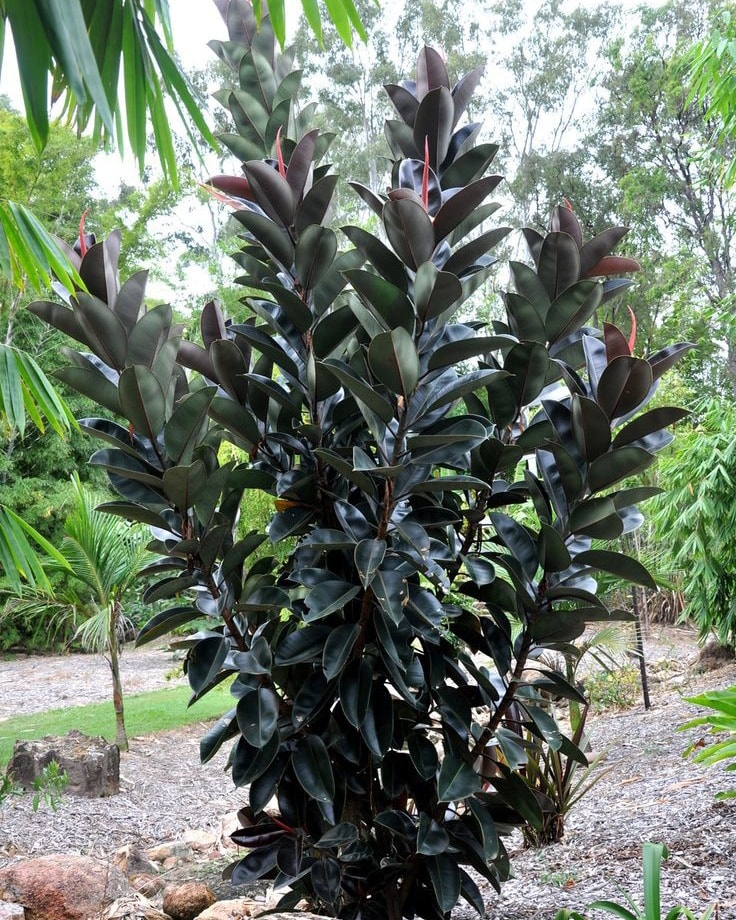
If you’re looking to add a touch of greenery to your home or garden, the Rubber Plant (Ficus elastica) is a superb choice. Known for its striking glossy leaves and robust nature, this plant is both a visual delight and a relatively low-maintenance option for plant enthusiasts. Whether you’re a seasoned gardener or a budding plant parent, understanding how to grow and care for a Rubber Plant can transform your living space into a lush oasis. So, let’s dive into the essential tips and tricks for nurturing this resilient beauty.
Understanding the Rubber Plant
What Is a Rubber Plant?
The Rubber Plant, or Ficus elastica, is a tropical evergreen native to Southeast Asia. Its name stems from the latex it produces, which was historically used to make rubber. This plant is known for its large, waxy leaves and can grow quite tall, making it an excellent focal point for any room.
Why Choose a Rubber Plant?
- Low Maintenance: Ideal for busy individuals or beginners.
- Air Purification: Helps to clean the air by removing toxins.
- Aesthetic Appeal: Adds a touch of elegance with its shiny, green foliage.
How To Grow And Care For Rubber Plant
Selecting the Right Location
Light Requirements
- Bright, Indirect Light: Rubber Plants thrive in bright, indirect light. Direct sunlight can scorch their leaves, so a spot near a window with filtered light is perfect.
- Low Light Tolerance: While they prefer bright light, they can adapt to lower light conditions, though growth may be slower.
Temperature and Humidity
- Optimal Temperature: Rubber Plants flourish in temperatures between 60°F and 75°F (15°C – 24°C). They are sensitive to cold drafts and temperatures below 50°F (10°C).
- Humidity Levels: They appreciate higher humidity but are relatively tolerant of average indoor levels. If your home is dry, consider misting the leaves occasionally or using a humidity tray.
Soil and Potting
Choosing the Right Soil
- Well-Draining Soil: Use a potting mix that offers good drainage, such as a standard houseplant mix with added perlite or sand.
- Avoid Waterlogging: Rubber Plants are prone to root rot if their roots sit in soggy soil, so ensure proper drainage.
Potting Tips
- Pot Size: Select a pot that’s slightly larger than the current root ball. Rubber Plants prefer to be slightly root-bound.
- Repotting: Repot every 2-3 years or when the plant outgrows its pot. Spring is the best time for repotting.
Watering and Fertilizing
How Often to Water
- Watering Schedule: Water when the top inch of soil feels dry. In winter, reduce watering frequency as the plant’s growth slows down.
- Avoid Overwatering: Ensure the pot has drainage holes to prevent water from pooling at the bottom.
Fertilizing Your Rubber Plant
- Fertilizer Type: Use a balanced, water-soluble fertilizer every 4-6 weeks during the growing season (spring and summer).
- Feeding Schedule: Reduce feeding in the fall and winter when the plant’s growth slows.
Pruning and Maintenance
Pruning for Health and Shape
- Regular Pruning: Remove any dead or damaged leaves to keep the plant healthy and encourage new growth.
- Shaping: Trim the plant to maintain its shape and control its size. Pruning helps to promote bushier growth.
Cleaning the Leaves
- Dust Removal: Wipe the leaves with a damp cloth every few weeks to remove dust and keep them glossy.
- Leaf Care: Be gentle to avoid damaging the leaves.
Common Issues and Solutions
Pest Problems
- Spider Mites and Scale: Regularly inspect the plant for pests. Use insecticidal soap or neem oil to treat infestations.
- Prevention: Keep the plant’s environment clean and avoid overcrowding with other plants.
Leaf Drop
- Causes: Sudden leaf drop can be caused by changes in light, temperature, or watering habits.
- Solution: Assess the plant’s conditions and adjust care as needed. Gradual changes are less stressful for the plant.
Brown leaf tips: Low humidity or exposure to dry air might be the culprit. Increase humidity or move the plant away from heat sources.
Yellowing leaves: Overwatering or underwatering can cause yellowing leaves. Adjust your watering routine accordingly.
Conclusion
Caring for a Rubber Plant is a rewarding experience that brings a touch of nature into your home. With its attractive foliage and relatively simple care requirements, it’s an excellent choice for both novice and experienced plant lovers. By providing the right light, temperature, and soil conditions, and addressing any issues promptly, you can ensure your Rubber Plant remains a healthy and vibrant addition to your space. Embrace the joy of nurturing this resilient beauty, and enjoy the lush greenery it brings into your life.
